Pros and cons of using in the kitchen
Many people associate a kitchen sideboard with their grandmother’s house – that’s where delicious candies and beautiful plates appeared during dinner. In a modern design, there is definitely a place for this piece of furniture, but first evaluate its advantages and disadvantages.
Pros:
- Roomy. A standard cabinet is not very big, but thanks to the abundance of shelves, you can fit a huge amount of kitchen utensils inside – food supplies, alcohol, tea, and dinner sets.
- Convenient. Models with a table between the upper and lower parts simplify any process – both setting the dining table and brewing delicious tea.
- Universal. Thanks to a wide range of models of different styles, colors, sizes, you can easily select and fit a sideboard into the interior of your kitchen.
Cons:
- Bulky. Freestanding furniture requires more space than built-in models. There simply won’t be any room for it in a small kitchen.
- Expensive. High-quality sideboards and buffets cannot be cheap, but they are guaranteed to serve you for many years.
Varieties
A three-tier sideboard for the kitchen is a classic. The lower tier is the widest, in most cases with blind facades. The upper floor is narrower, it can have either open shelves or doors – blind or glazed. Between them there is an open niche with a tabletop, which can be divided into zones. The functionality of each level is clearly divided: the bottom stores nondescript items (food supplies, pots), the top stores beautiful items (serving utensils), and the central section is used as an auxiliary table.
Modern kitchen sideboards are not much different from traditional models in shape, but the style and execution can be completely different.
There are other variations of this piece of furniture:
- a solid cabinet without division into tiers;
- a two-tier sideboard without a niche;
- a cabinet with a niche and a shelf on top, without an upper floor.
Cabinets vary in size: usually the height is 180-200 cm, but there are lower (140-160), higher (220-270) models. The width of the standard model is 120-200 cm, in a small kitchen with a buffet it is better to use narrow options (80-100), in spacious ones there is enough space for wide, more capacious (wider than 2 meters).
The filling of the buffet is of no small importance:
- open shelves;
- shelves behind facades;
- drawers;
- rotating carousels;
- dividers;
- holders;
- hooks;
- stands.
Before buying, decide what exactly you are going to store in it, then you will know what fittings are needed.
Open buffet
Open designs imply the absence of facades in the upper part, although sometimes there are no doors at the bottom. Often the upper tier is equipped with shelves, glass and mug holders, bottle holders, baskets.
The main disadvantage of this option is the accumulation of dust and grease, it is suitable for items that are used regularly. For example, everyday dishes.
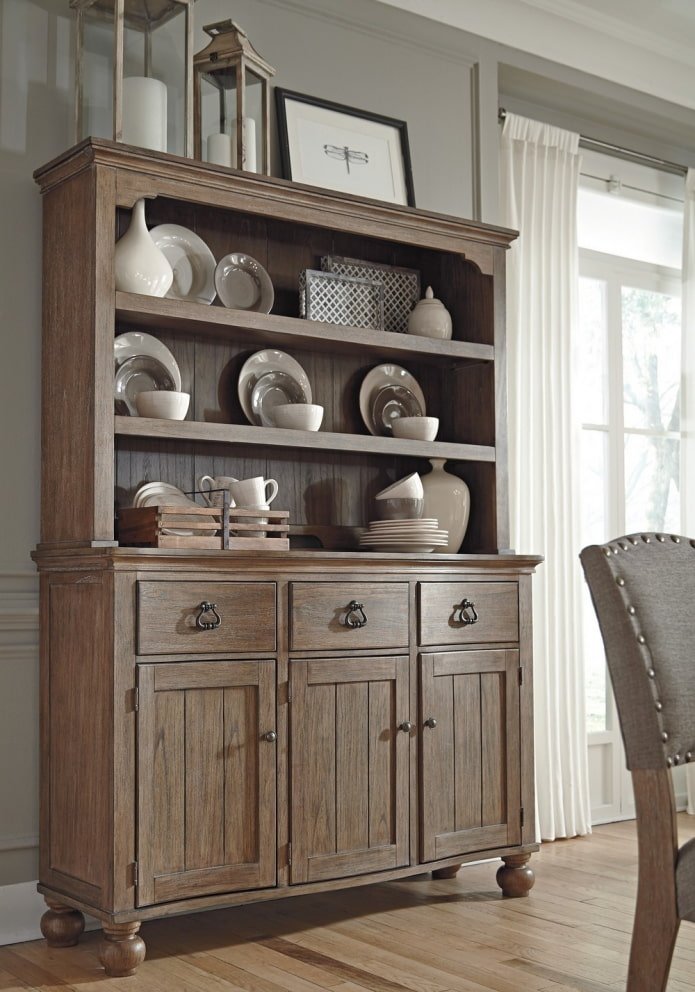
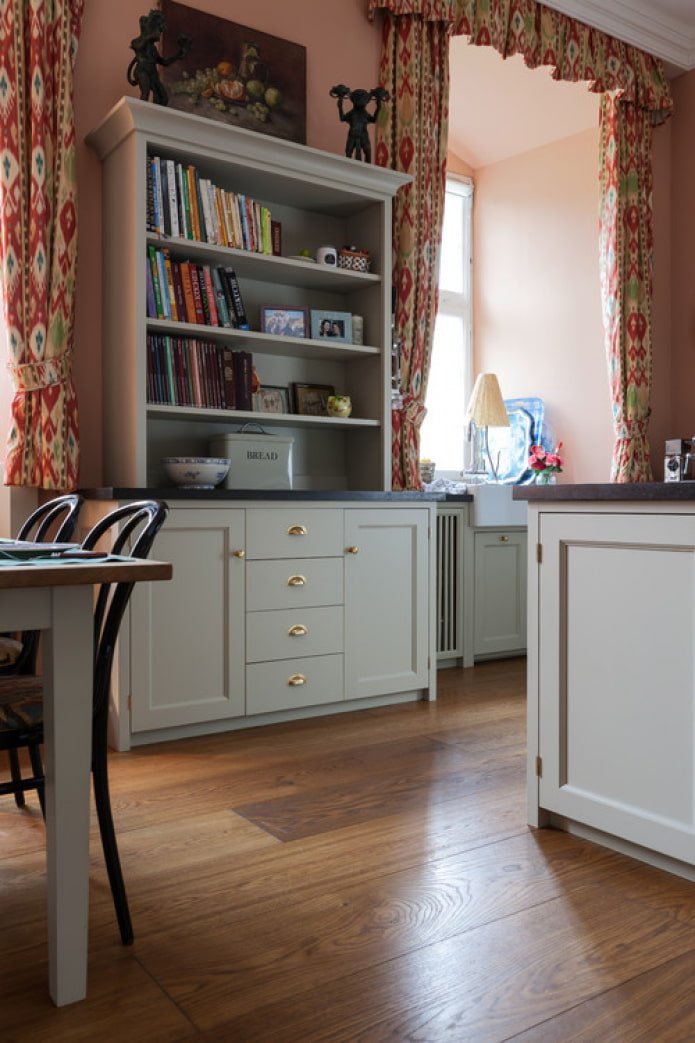
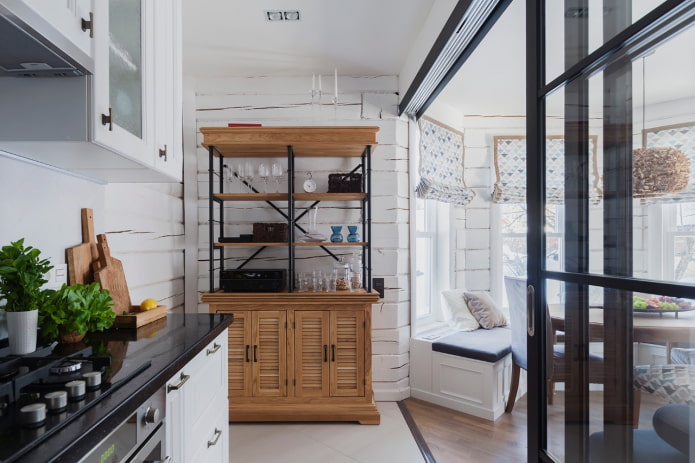
The photo shows a sideboard for a kitchen in a loft interior
Closed buffet
The closed form must have doors, and they can be blind, with windows made of glass or mesh. This type of storage eliminates contamination of dishes, it is perfect for holiday services.
A kitchen sideboard with wooden facades looks massive, for small spaces choose varieties with glass doors or without them at all.

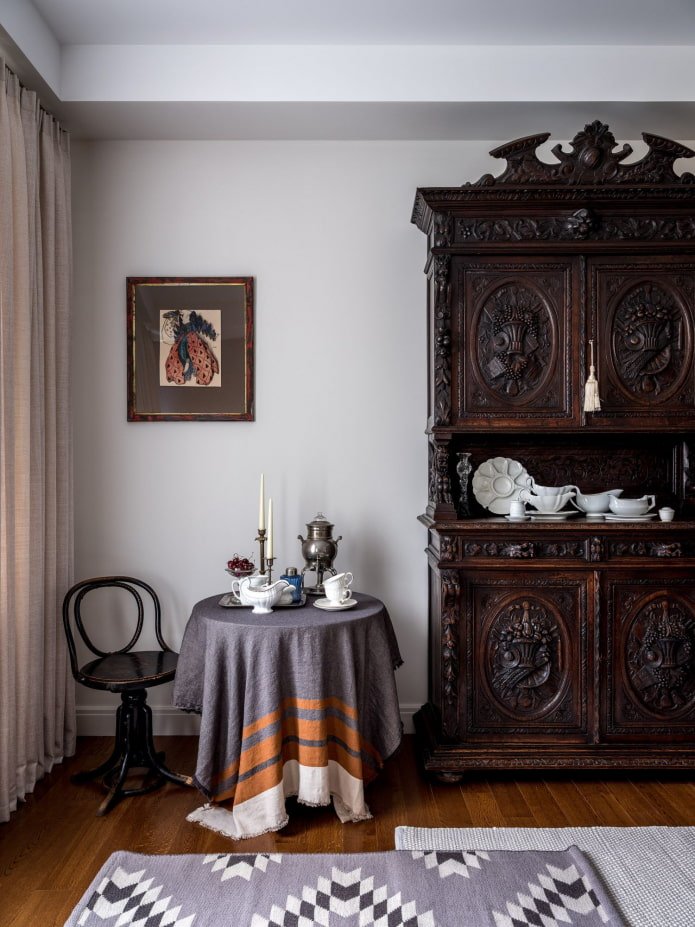
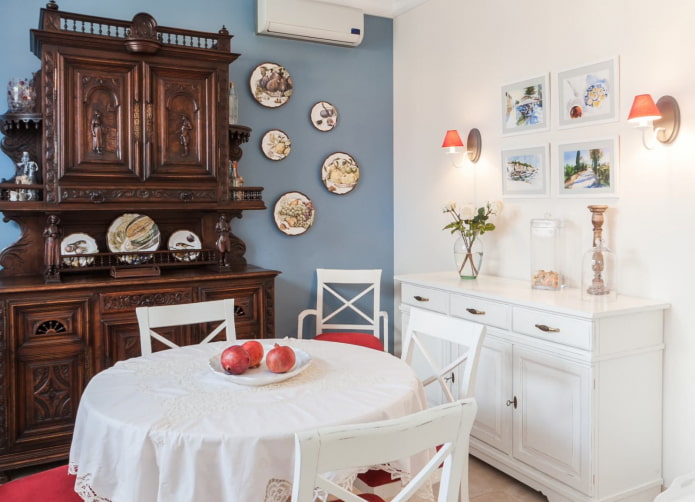
The photo shows an antique dark cabinet in a white kitchen
Where is it better to place it?
Near the kitchen furniture. A china cabinet made in the same style as the kitchen set will be a wonderful continuation of the furniture ensemble. A built-in option is possible, when the sideboard is built into a straight or corner set, making it the central part. But in this case, make sure in advance that the height of the countertop is at the same level.
In the dining area. If you are going to store serving dishes in a sideboard with a display case, place it closer to the table. This arrangement will make it easier to serve lunch or dinner, and you won’t have to make a lot of unnecessary movements.



On the border of the kitchen and a dining room. When cooking, you can easily get the necessary products from the sideboard, and when serving, the necessary dishes. The interior item will act as a delimiter of functional spaces. Place it across the wall to make the zoning as clear as possible.
On both sides of the window/door/table. For a symmetrical layout, you will need two narrow pencil cases, which can easily replace one bulky one. This technique is used if there are two equal empty spaces near the opening.
In a niche. When you don’t know what to do with a niche in the kitchen, put a sideboard in it! Order this item to be made to your individual dimensions so that it takes up all the available space.
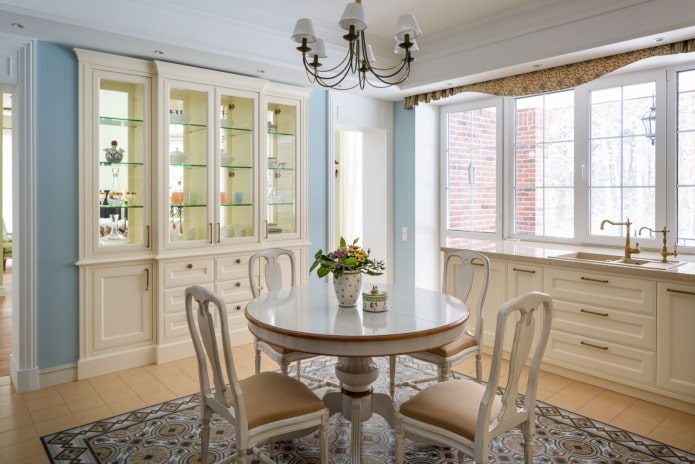
The photo shows a sideboard built into a niche
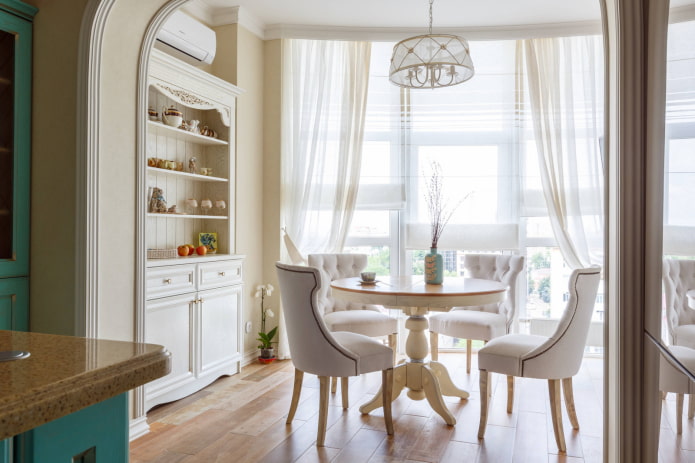
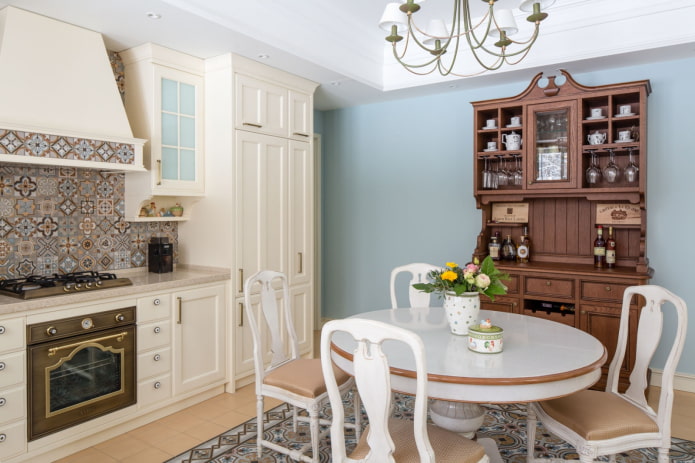
Features of choosing a color and design
The design of a kitchen with a sideboard is made in several versions:
- The sideboard completely repeats the color, style, and finish of the kitchen furniture. If it looks like part of the furniture, then it will easily fit in as a continuation of the set or inside it.
- The sideboard for the kitchen repeats either the color or the decor of the other items. Repeating one of the components allows you to “marry” all the furniture in the room, while separating the cupboard from the other modules.

The photo shows bright furniture in the interior of a country house


- The cabinet matches the dining area. If you plan to place the sideboard next to the table or in a separate dining room, choose it to match the table and chairs. The match can be either absolute or partial: repeating decor, color, print, textures, materials.
- Accent on the sideboard. A cabinet in a contrasting color/style will become the main detail of the kitchen. To achieve this effect, it is not necessary to choose bright colors – in a dark kitchen, a white sideboard will stand out, while in a light kitchen, dark or mahogany will sparkle.
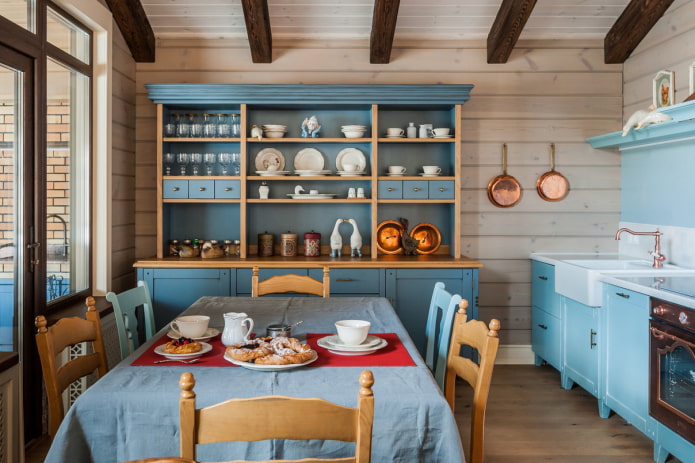
The photo shows a wide open sideboard

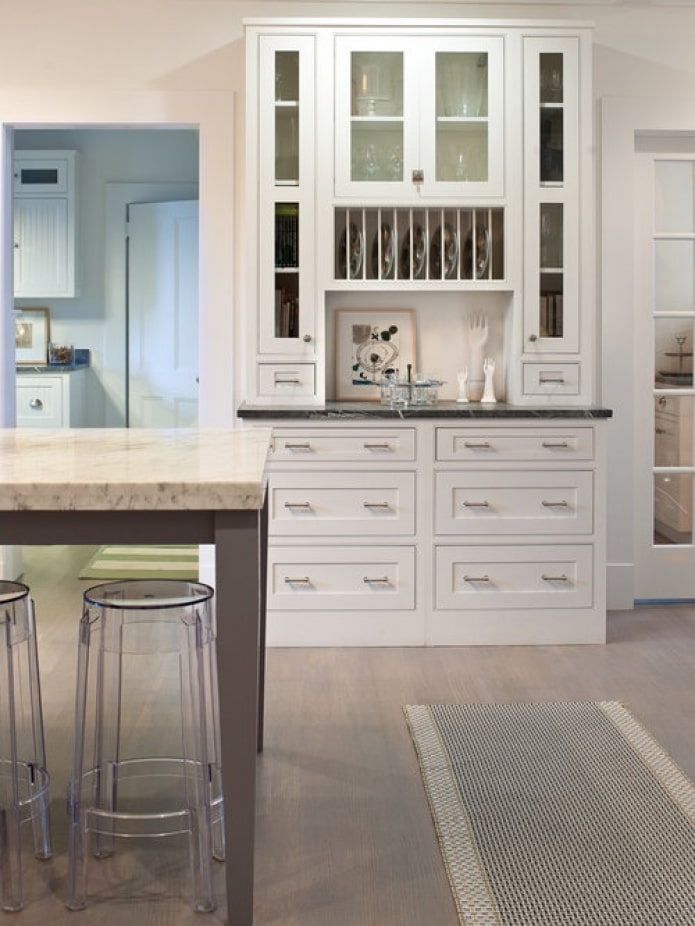
What style is best to use?
No matter what design direction you are creating the interior in, there will always be a suitable sideboard for the kitchen or living room! Today, the market offers a huge variety of options that differ in shade, style, and decor. And if you need something special, order the product from a furniture maker. Here are several options for the main styles:
- Classic. The more expensive the furniture, the better – choose natural wood. Decorated with carved facades, golden bevels, and other decor, the buffet will add nobility to the overall picture.
- Country. Here, on the contrary, there is a minimum of interesting decorative elements and a maximum of functionality. An abundance of drawers and shelves is an ideal practical option for a rustic style.
- Provence. All attention is paid to the color scheme: white or pastel shades are better. The aged surface and small details, like the knobs and handles with flowers, look harmonious.
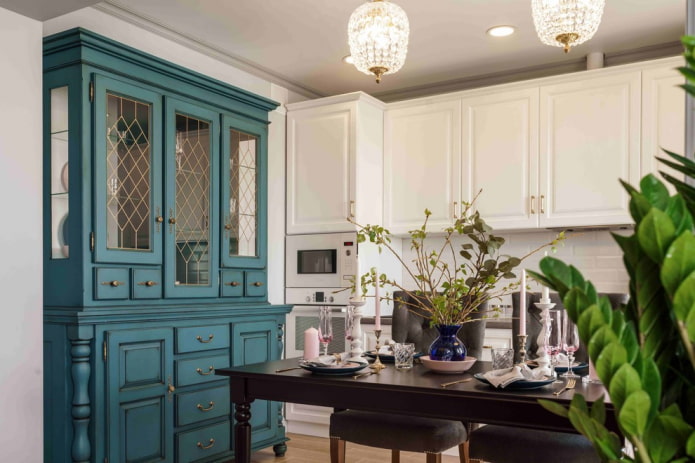
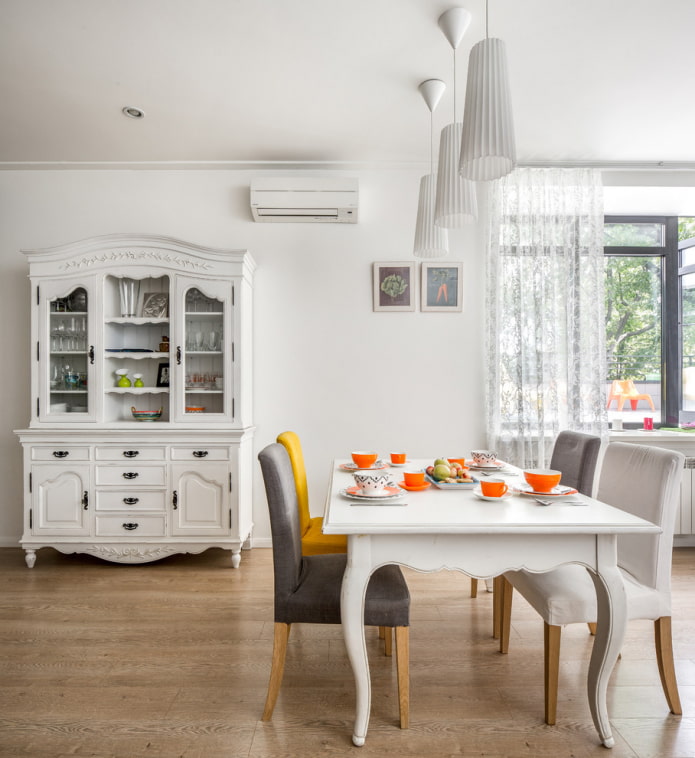
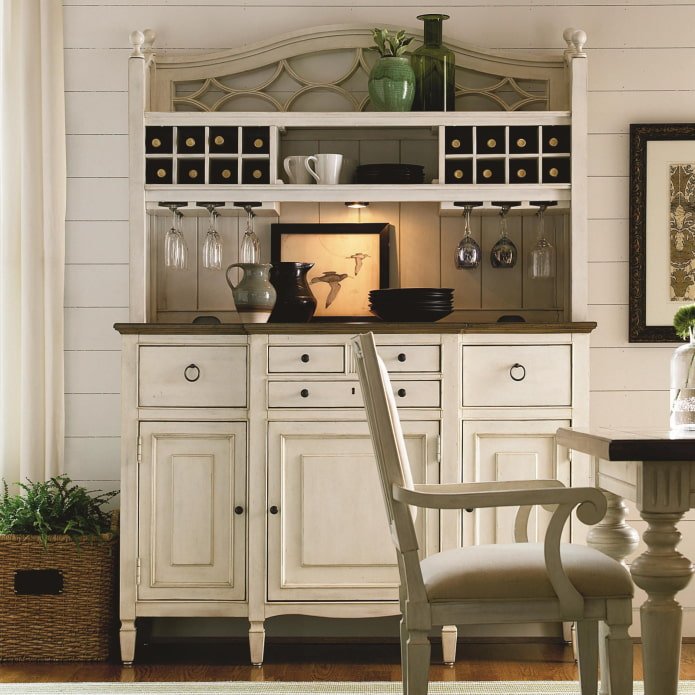
- Loft. Even in this style, if desired, you can install a china cabinet! It is desirable that it combines the texture of wood + metal or matches the kitchen set.
- Modern. New times – new materials, in this case, wood is replaced by chipboard and MDF, glass by plastic. The color is best dark or dirty, necessarily matte.
- Eclecticism. When creating a modern design, it is not necessary to choose a laminated laconic sideboard, play on the contrast. Put a vintage cabinet in a fashionable minimalist kitchen – this is a great solution for preserving antique furniture.
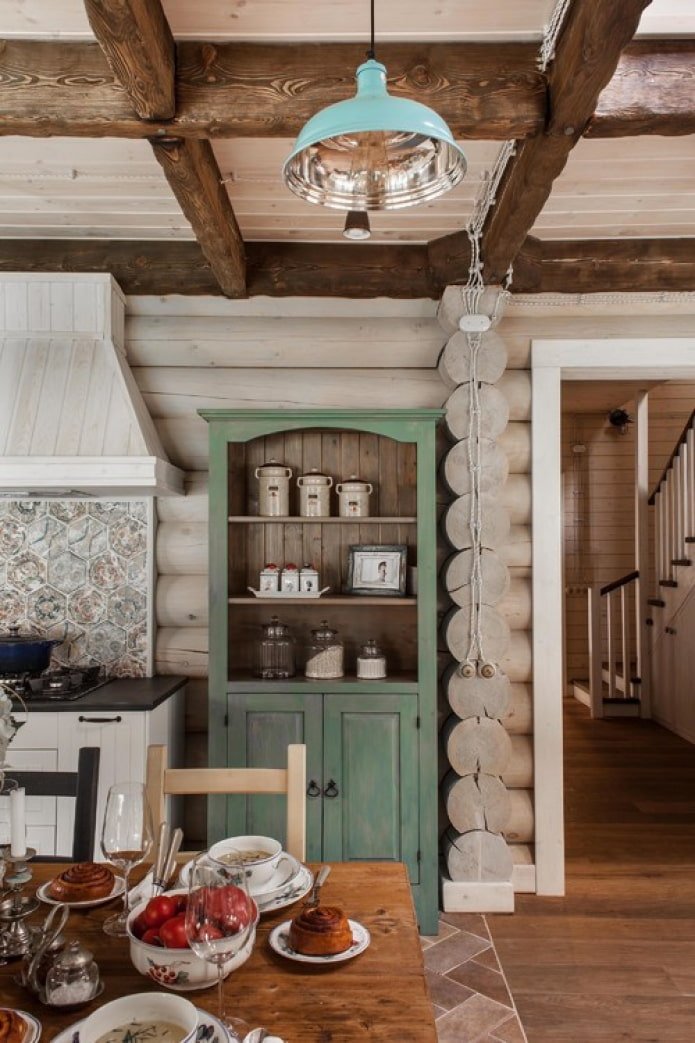

Now reading:
- 10 Best Ways to Conveniently Store Garden Tools.
- 10 Fragrant Plants for the Home That Are the Perfect Replacement for Air Fresheners
- Experience the Thrill of Driving a Ford Fiesta
- Floating ceilings: advantages and disadvantages, types, definition, 83 design photos
- Explore the Versatile Fiat Qubo: Your Ideal Companion